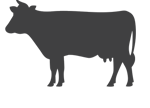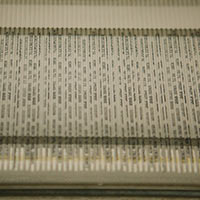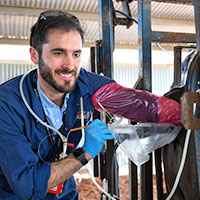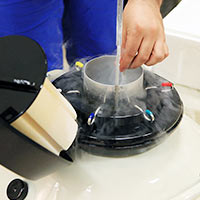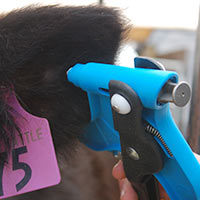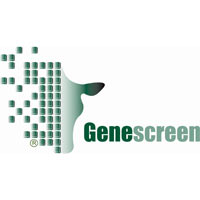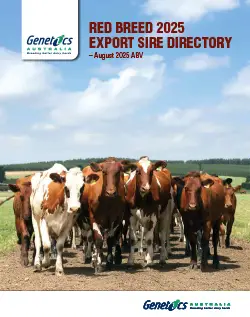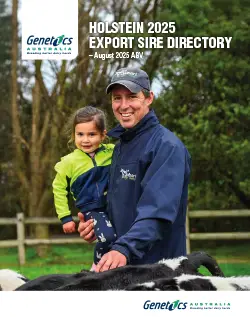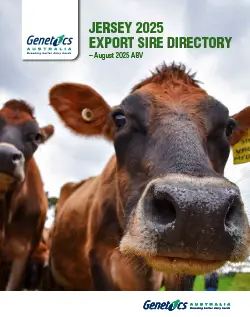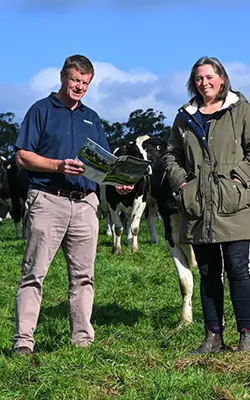Genetics Australia Theme
The Beginning
Artificial breeding has a long history – it began with a group of Arabian horse breeders in the 14th century! Cattle were artificially inseminated successfully for the first time early in the 20th century in Russia, and in 1949 English research workers demonstrated the viable deep freezing of cattle semen. In Victoria a pilot unit was established by the Department of Agriculture at the State Research Farm at Werribee in 1945 using chilled semen. A commercial AB unit was established at Timboon in 1948 and another at Tatura 1949. They were self-contained, owned their own bulls and did all their own collecting, processing and inseminating. However, they were not viable and closed down at the end of 1949.

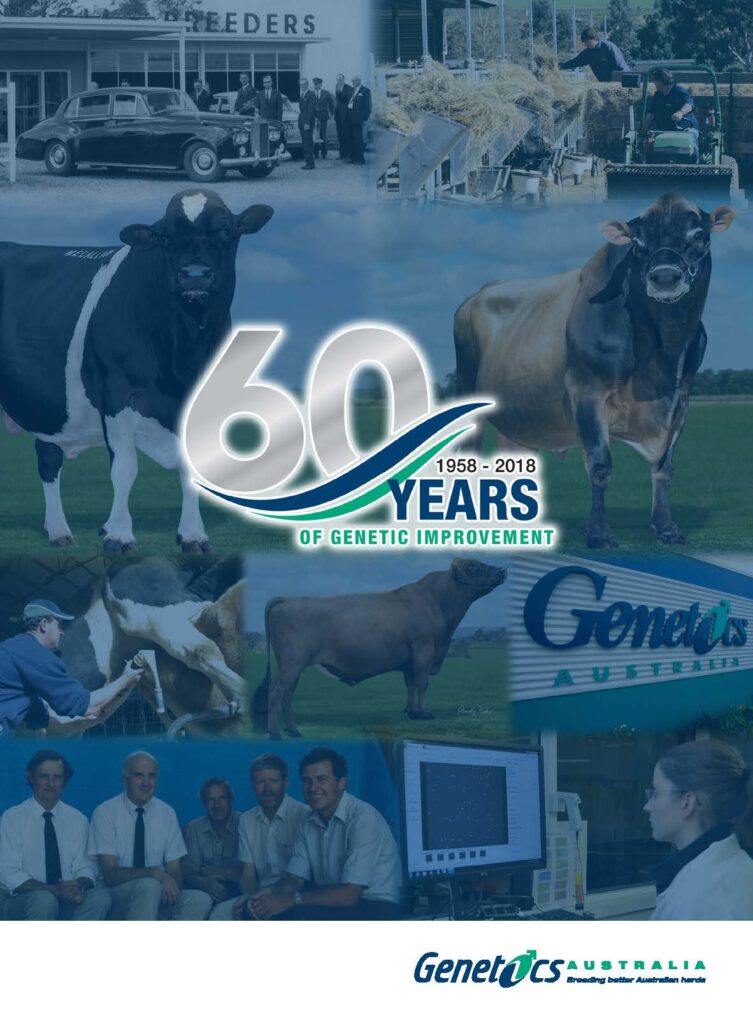
Industry Expansion
Insemination groups recognised the need for concerted thinking and established the Artificial Breeding Association (ABA) to negotiate with the Department on changes in the system. In 1956 it was realised that demand for semen would grow beyond the Department of Agriculture’s production capacity and proposed that the industry set up a cooperative.
Click on the link to the left to read all about it.
Foundation meeting
Accordingly, at 1:30 pm on July 17, 1958 a meeting commenced at the State Research Farm at Werribee. The chairman was Mr R. M. Noble. Also in attendance were Mr F. M. Reid (Deputy Director of Agriculture), Mr D. S. Wishart (Senior Veterinary Research Officer), Mr Senior (Registrar of Cooperatives), and over 250 interested persons. Mr Senior outlined the advantages of registering as a Cooperative Society. Mr Reid told the meeting the Government had agreed to provide a grant of £2000 ($4000) once support for the suggested cooperative was evident. The following minute was then recorded: It was further resolved on the motion of Mr H. J. Roberts, seconded by Mr J. Gardiner that in order to promote A.B. in Victoria a cooperative society be formed for the establishment and operation of a bull farm and semen distributing centre. The proposed rules were read and adopted. Capital would be raised by issuing $2 shares. The minimum subscription would be five shares and the maximum 1000 shares per member.
First board
Nominations were then called for members of the board. The rules provided it would consist of seven members. Nominations exceeded the number required and a ballot was conducted resulting in Messrs. J. D. Gardiner, W.R. Selzer, J. T. Reid, H. L. Martin, M. Noble, C. H. Chamberlain and J. Peach being duly elected. The meeting then closed
Victorian Artificial Breeders Cooperative
And so was formed the Victorian Artificial Breeders Cooperative Society Limited (VAB), later to become Genetics Australia Cooperative Limited in 1994 through the merger of VAB and the Queensland Government owned Wacol AB centre. Farmers showed renewed interest and confidence in artificial breeding after the establishment of VAB and cow numbers increased rapidly. In 1956 only 8000 cows had been inseminated in Victoria. By the time operations commenced at Parwan Park in 1961 that number had increased ninefold.
Horizon Genomic Program key to success
Genetics Australia has produced many of the Australian dairy industry’s leading bulls. The Horizon Genomic Program has been the key to our success. It started in the early 1960s. In those early years bulls (primarily Jerseys) were selected from the best studs in Victoria. Understandably, very few were sired by AI. A basic breeding value estimation system was used. It calculated breeding values for bulls using a contemporary comparison methodology. There were no cow breeding values.
Imported semen
During the 70s semen became available from the UK and Canada. USA semen wasn’t available but some Canadian bulls had US sires. Selection methods remained the same for over 20 years but efficiency improved as more and more AI animals appeared in the pedigrees of the Horizon Genomic Program bulls. Canadian semen was used in the breeding program with some success. Canadian bulls started appearing in the pedigrees of the Horizon Genomic Program bulls as breeders embraced this new source of genetics.
ABVs
The Australian Breeding Value (ABV) system was introduced in the early 1980s. It improved the accuracy of the evaluation system and interstate comparisons became possible. Cow ABVs were then introduced and for the first time we had an estimation of their genetic merit. Cow ABVs were utilised to evaluate potential young bulls using the parent average method.

North American bulls
Imported genetics played an important part in the breeding program in the early 1990s. Following the success of the first live bulls (LALE, QEAR and PENN) imported from the US by a farmer syndicate, VAB imported large numbers of bulls from North America with some success. With the Australian payment system placing increased emphasis on protein, it made sense to import North American genetics to increase protein production in our domestic bulls. While initial importations proved successful, they were high cost and results declined with each subsequent importation. Bulls such as Holsteins JUDGE and SHOTIME and Jerseys DILLON, DUNCAN and ASTOUND proved very popular.



Creation and continued growth of Genetics Australia
Following the merger of Wacol AB and VAB to form Genetics Australia in 1994, Genetics Australia continued developing the Horizon Genomic Program, of all major dairy cattle breeds. Top Australian bull lists are now dominated by Australian proven bulls and Genetics Australia continues to achieve outstanding success with over 50% of the top bulls available in recent times.
We continue to focus on breeding bulls that maximise profitability under Australian conditions and Australian milk payment schemes heavily based on components rather than volume.
Commencing in 2000 we merged or acquired a number of retail service organisations such as Herd Improvers Australia, Timboon Herd Improvement and Western Herd Improvement. These have significantly added to the business of the Cooperative and our ability to directly service our members.
Australian bulls shine through
In the late 1990s, domestic bulls were proving competitive with the best offshore bulls. Australian breeders rose to the challenge, combining the best imported and local sires with strong performing Australian cow families to produce bulls that are best suited to our Australian dairy system. Bulls such as WINLUKE, ALLORA, DONANTE and INFORMER are great examples of what our Australian breeding program can produce



Strong R&D
During the 90s Genetics Australia established a fully functional IVF laboratory at Parwan Park South. Research into cloning produced Australia’s first cloned bull and cloned females. A recipient herd was established to implant research embryos.
Genetics Australia’s R&D focus continued in the exciting area of genetic markers with two project partners, the Dairy CRC and DPIV, producing promising results. We are deeply committed to a strong R&D program for the benefit of Australian dairy farmers.
Expansion
In 2020, Genetics Australia purchased Total Livestock Genetics (TLG), taking over the TLG trading name and relocating GA’s bull management, semen management and semen collection and production services to the TLG sites in Camperdown and Glenormiston in south-west Victoria.
The Parwan Park property at Bacchus Marsh, which had been the cornerstone of Australia’s artificial breeding industry for more than 60 years, was sold in 2021.
A new era
On July 1, 2023, Genetics Australia moved into an exciting new era as part of a Joint Venture with global herd improvement leader URUS. While continuing to trade as Genetics Australia and retaining the TLG brand, the Joint Venture opens up huge opportunities for local farmers to access new products and to reach into new international markets. URUS is based in the United States and is a global leader in products and services for dairy and beef producers for artificial insemination, genetics, reproduction, and farm management systems.
The Joint Venture strengthens Genetics Australia’s position as Australia’s leading artificial breeding supplier. The JV is 60 per cent owned by URUS and 40 per cent owned by GA and has access to the full suite of GENEX products and to the PEAK breeding program.
Remaining true to the founding vision
More than 60 years on, Genetics Australia remains true to the vision and aspirations of those who gathered at Werribee in July 1958. Their foresight led to improved profitability for generations of dairy farming families.
Genetics Australia continues at the forefront of technological developments in artificial breeding and herd improvement, and maintains a total focus on putting more dollars in the pockets of dairy farmers.
“Co-operatives are a reminder to the international community that it is possible to pursue both economic viability and social responsibility.”
United Nations Secretary-General Ban Ki-moon
Be a part of your future
Genetics Australia came into existence through the co-operation of Australian farmers working together to improve their farming. The driving reasons for our foundation back in 1958 still exist today – using the best genetics in the world to breed animals and test them here on Australian farms. This is more important today than ever, with farmers being offered more and more choices in genetics from around the world in animals bred in completely different conditions to Australia. While in many ways the world has shrunk the need for a strong, sound, profitable animal that works in Australia has not.
We need you to be part of our future
A co-operative exists because of its members and for its members. You should be a part of this – whether your interest is breeding animals or simply buying farm supplies. There are significant benefits to being a member with programs including rebates, reduced prices, discounts, and access to collective buying schemes. Not to mention the sense of belonging that comes from knowing you are working together with others to improve our farming future.
You can have a say in our future
Co-operatives are run by members – that is the co-operative is run by a board composed of members. If you want a say in how the co-operative is run you can talk to a board member – they’ll be someone just like you – or you can put your name forward to be elected to the board when nominations are announced. That is what a co-operative is all about.
Application Form
Rules of the Co-operative
The Board of Director’s primary role is to establish direction, monitor the performance and oversee the financial accountability of Genetics Australia Co-Operative on behalf of the shareholders. The board is made up of 8 directors consisting of 6 elected member directors and 2 independent directors that are appointed by the board. Elected members hold office for three years and independent members hold office for a term determined by the board but no longer than 3 years.
The Board of Directors is the representative of the owners, our shareholders. Shareholders elect each director, apart from two specialist directors appointed by the board. The board elects a Chairman each year and it is currently John Pekin. The Board of Directors is responsible for policy. It employs a Chief Executive Officer who is responsible for implementing the board’s policy including the management of all operators and staff Genetics Australia is committed to the profitability of Australian farmers through the development of Australian proven beef and dairy genetics from local and worldwide bloodlines. In addition to genetic improvement the co-operative offers merchandise, and bull collection.
Meet the Board Members

John Pekin
(Chairman)
BAgrBusMgt., Adv.Dip.Ag.
Kolora, Vic.
John was elected to the Board in November 2016. John has a Bachelor of Agricultural Business Management and an Advanced Diploma of Agriculture. He was a speaker at the 2019 Australian Dairy Conference on the success of genomically testing his herd. He worked for Western Herd Improvement as an AI technician for 10 years in local dairy herds and conducted/managed synchronized AI programs in beef herds in Victoria and interstate. John is chairman of the Animal Health & Welfare Committee.

Craig Drake
(Deputy Chairman)
Dip. Ag. Sci., Dip. Farm Man., FAICD Dip
Allansford, Vic.
Craig was elected to the board in December 2011. He has been a director of Tas Herd since 2000. He is a former board member of Warrnambool Cheese & Butter and former chairman of Western Herd Improvement. Craig became Deputy Chairman in November 2015 and is also a member of the Audit and Risk Management Committee.
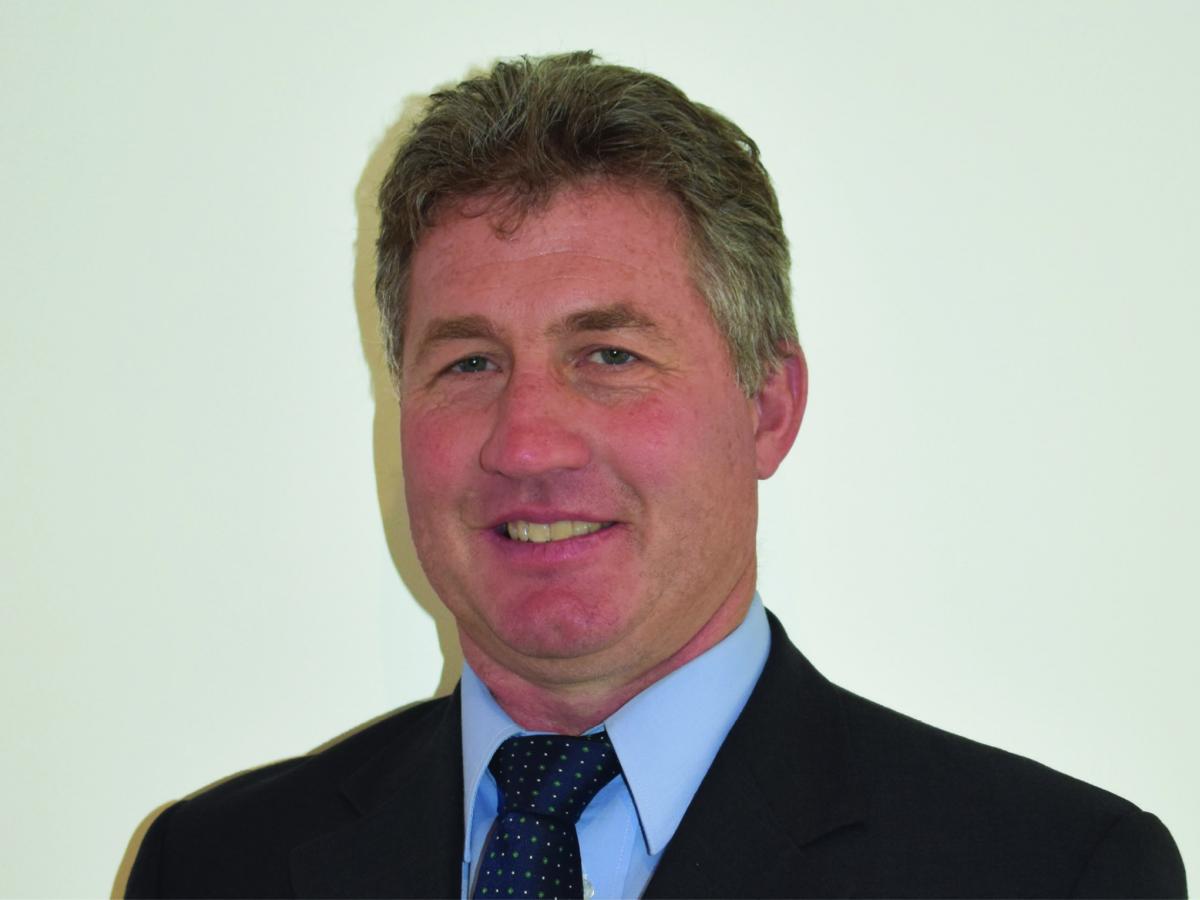
Tim Humphris
(Non – Executive Director)
BVSc ., MVS
Nirranda South, Vic.
Tim was elected to the board in November 2018, he has a Bachelor of Veterinary Science and Master of Veterinary Studies in Veterinary Clinical Sciences Dairy Medicine and Management. Tim is a committee member of the Standing Committee for Genetics Evaluation with Datagene. After 15 years of working as a dairy veterinarian, Tim has now been farming for the last 12 years. He runs a 450 cow three-way cross dairy herd using Holstein, Jersey, and Aussie Red genetics. He is also a member of Holstein Australia and the Australian Red Dairy Breed.

Trevor Henry
(Non Executive Director)
Maffra, Vic.
Trevor was appointed to the Board in May 2010 and has now served for over 10 years. Formerly a director of the Macalister Demonstration Farm Board for 10 years where he served 4 years as Chairman. Trevor was previously Deputy Chairman GAC from 2013 to 2015 and then served as Chairman from November 2015 June 2023. In June 2023 Trevor stepped down as Chairman of Genetics Australia Co-Operative Board to take a up the position of Chairman on the new Genetics Australia Holdings board. Trevor runs his own successful dairying operation in Gippsland, Victoria, and also often contributes High BPI bulls to the GA & TLG line-up.
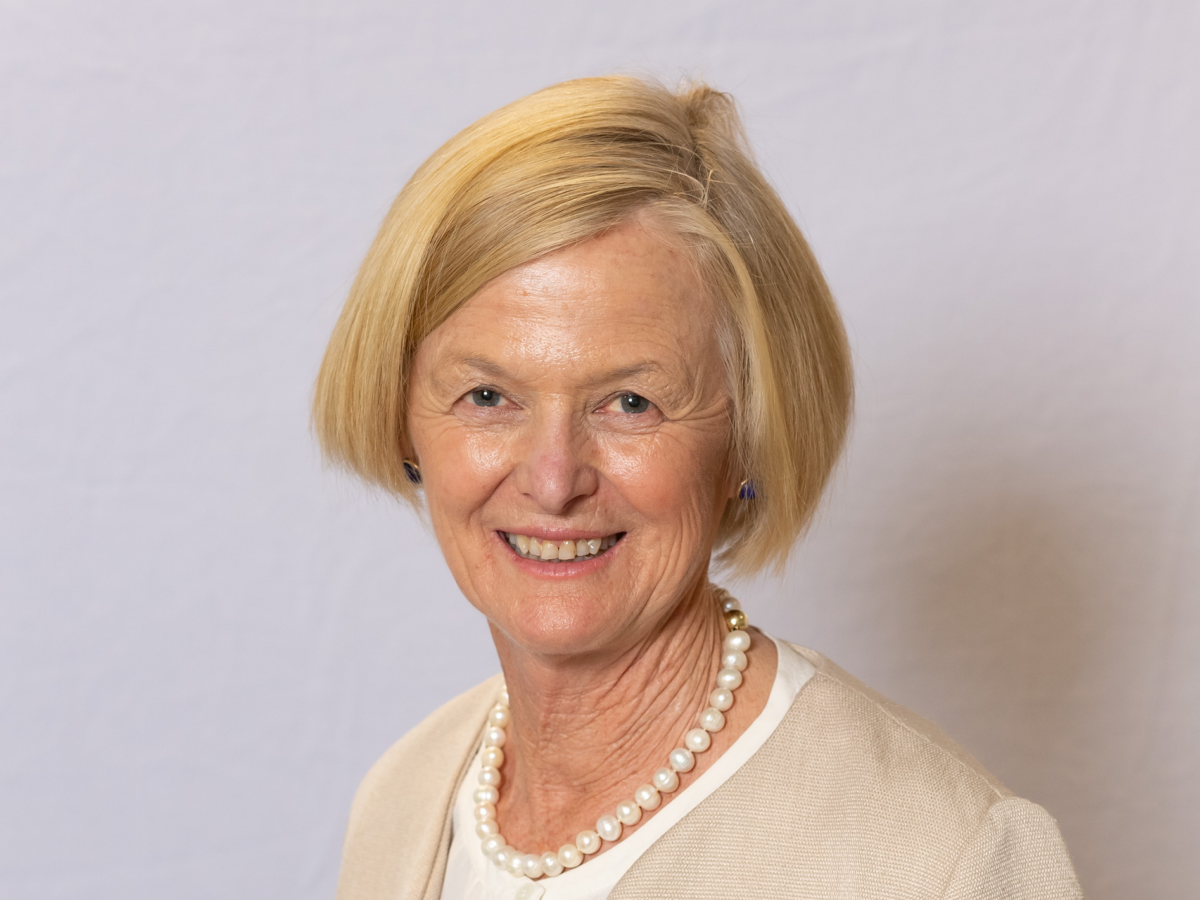
Lucinda Corrigan
(Non Executive Director)
B. Sc. Agr (Hons 1)
Bowna, NSW.
Lucinda and her husband run 3,500 performance recorded cattle on seven properties ln the NSW Murray Valley, near Albury. Over the past 30 years they have developed a leading Angus genetics business, ‘Rennylea’, from small base, with dedicated use of Breedplan for genetic improvement and a highly accurate database of phenotypes and genotypes.
Having graduated with Agricultural Science degree, Lucinda also has significant off-farm experience, including a variety of roles with Dawson International PLC, a multinational textile company and CEO of the Australian Cashmere Growers Association.

Jonny O’Brien
Jonny is an experienced finance professional with diverse experience across Private Equity, M&A and business strategy. Today, Jonny owns and manages South Island, a farm management and development business, and consults widely across Australian agriculture. Jonny lives in Kolora and helps oversee a family dairy enterprise south of Simpson.
Our Genetics Australia Vision is:
To be an innovative supplier of genetic material to a sustainable agricultural sector.
The mission from Genetics Australia is:
Genetics Australia is committed to the sustainability of livestock agriculture through the provision of trusted genetics, products, and services.
The Genetics Australia co-operative was formed in 1958 and is owned by approximately 900 members who are shareholders in the co-operative. Our members are also customers who use our products and services through Genetics Australia Holdings Pty Ltd. The Genetics Australia Co-operative partners with URUS LP as the two shareholders of Genetics Australia Holdings Pty Ltd.
The co-operatives own the land assets that are utilised within Genetics Australia Holdings Pty Ltd, this is a key contribution that Co-operative makes to ensure the long-term future of Australian semen production and the continuous of Australian breeding programs. View our history page for additional details.
The Board of Directors is the representative of the owners, our shareholders. Shareholders elect each director, apart from specialist directors that are appointed by the board. The board elects a Chairman each year and it is currently John Pekin.
Genetics Australia has its registered office at ‘Parwan Park South’, 4104 Geelong – Bacchus Marsh Road, Parwan, Victoria, Australia. The business and operations of the Society are controlled by a Board of Directors appointed by the farmer shareholders.
